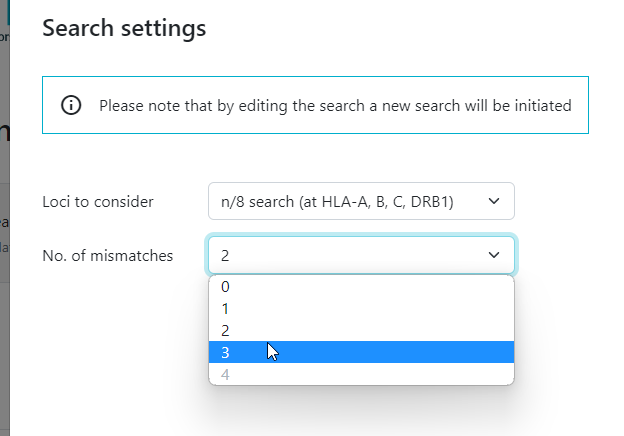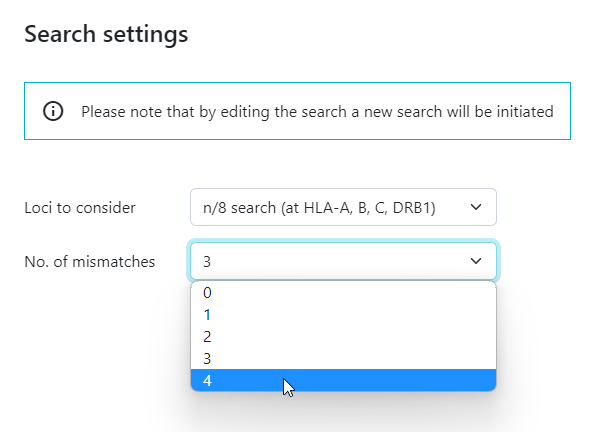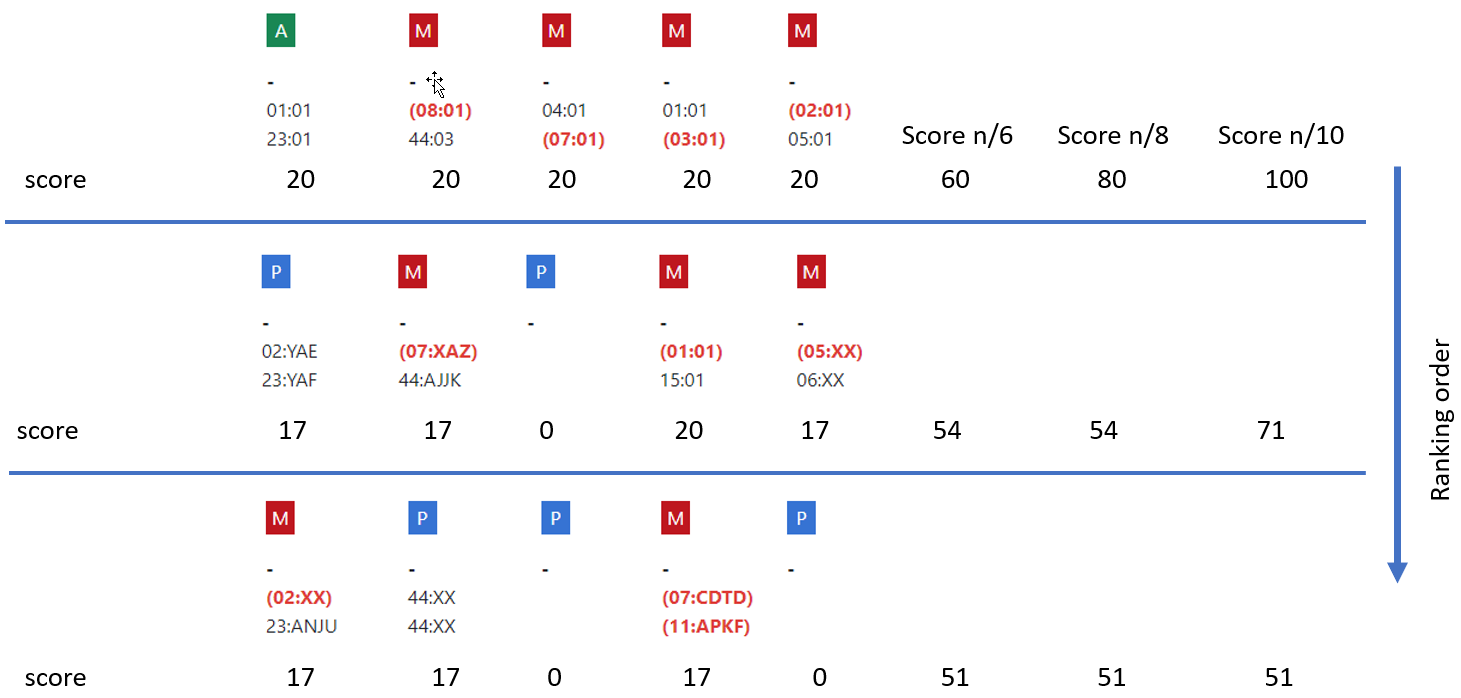Introduction
Both the UK and USA guidelines for cord blood selection recommend three and four mismatches as suitable options for patients with high-risk leukemia and for treatment-resistant types of blood cancer. Some of the WMDA member organisations have implemented to run a routine cord search with up to four mismatches as a default. Therefore, WMDA has implemented this option as well in Search & Match Service.
At the moment, the Search & Match Service (with the Hap-E matching algorithm) is providing an extensive list of potential cord blood units, when a three and/or four mismatch search is performed. For search coordinators it is difficult to select the best possible potential stem cell source, when they perform a three and/or four mismatch search in the Search & Match Service today.
The match list presents all possible options. In order to help search coordinators to select the best potential stem cell source, WMDA is implemented an additional features to assist search coordinators, you can read the details below.
How to perform a three and/or four mismatch search for cord blood?
Three and four mismatch searches have been implemented for cord blood searches in Search & Match Service. This is a resource intensive service, therefore you first perform a two mismatch cord blood search before you start a three mismatch cord blood search:
- Step 1: run a two mismatch cord blood search, before you can start a three mismatch search
- Step 2: run a three mismatch cord blood search before you can start a four mismatch cord blood search
What is important to know about three and/or four mismatch searches?
In the old version of Search & Match Service, no overall match probabilities calculations for cord blood were done. The sorting was performed within the match class (i.e. 5/8. 4/8) based on the Total Nucleated Cell (TNC) or CD34+ cell counts (depending on what a search coordinator prefers). This has been implemented in the same way for the new version of Search & Match Service operating with the Hap-E matching algorithm.
In the new version of Search & Match Service the number of search results can be bigger, as the Hap-E algorithm returns more potential cord blood units. If you experience a high number of potential cord blood options, you can for example filter on the minimum TNC, minimum CD34+ or by certain registries or mismatch locations.
How is sorting done of three and/or four mismatch searches?
Three and/or four mismatch cord blood search results do not have any match probabilities calculated, the results are currently sorted within their match class (e.g. 5/8, 4/8) only by TNC or CD34+. The Hap-E algorithm in the Search & Match Service returns more potential cord blood units than the legacy system. Many of these “extra” cord blood units tend to be low probability cord blood options, because these cord blood units have low HLA resolution typing or missing allele typing.
This means that a poorly matched cord blood units with high cell dose are at the top of the match list and potentially better cord blood units with a high enough cell dose are lower. For a search coordinator, it is harder to identify the best possible cord blood, because of the increased number of valid potential matches.
In an effort to improve the search coordinator's experience when performing three and/or four mismatch cord blood searches, WMDA is currently developing several features that should improve the efficiency of finding suitable cord blood unit. These are:
- Filter for returning only donors/cord blood with typing at C (and/or DQB1). Available today.
- Filter on match class - a search coordinator can go directly to the 5/8 or 4/8 potential matches. Scheduled for delivery December 2022.
- "Score" based sorting for three and/or four mismatch cord blood results (find details below). Scheduled for delivery December 2022.
- Match probability calculation for three and/or four mismatches. Scheduled for delivery Q1 2023.
Score based sorting of 3 & 4 mismatch search results (see option 3 in above paragraph)
In general it is true that the more highly typed a CBU/ donor on a match list is, the higher the probability of a match. As we are currently not able to provide match probabilities and it will take a few months to fully develop, we will use a score based approach. This works in the following way
- Assign a score based on the typed loci and their resolution
- Each locus can have one of the following “resolutions”
- High resolution typing (only one ARD)
- Low or intermediate typing
- No typing
- Each resolution class per locus has a “score”.
- High = 20
- Low or intermediate = 17
- No typing = 0
- We sort CBUs based on the sum of the score first and only then by TNC/CD34
- n/6: sum of score at A, B, DRB1
- n/8: sum of score at A, B, C, DRB1
- n/10: sum of score at A, B, C, DRB1 and DQB1
- Sorting for 0 , 1 and 2 mismatches remains unchanged
Because of the way the scores are assigned per locus, a CBU with typing at C when doing an n/8 search will always be ranked higher than a CBU with high resolution typing at 3 loci and no typing at C.
Below you can find some examples.
Match probabilities
Calculation of actual match probabilities would provide a better way of ranking than score-based ranking. Unfortunately this requires quite a lot of work in core elements of the Hap-E algorithm. This therefore needs to be done with great care and needs to be thoroughly tested in order to make sure no part of the Hap-E algorithm is accidentally broken as a result of the added functionality. It therefore cannot be delivered until Q1 of 2023.


